I hesitate to recommend Strobilanthes as houseplants because of their high humidity requirements. However, I tried to keep a plant I bought on sale throughout the winter, with mixed results, which seemed to indicate that I had underestimated its tolerance for dry air. When I passed by a kiosk over the weekend selling pots of Strobilanthes at least 10 inches in diameter (for those of you who have no sense of scale, that means big pots!), I was struck by their beauty, which I had also underestimated. I think it’s time to write an article on caring for Strobilanthes indoors—and, above all, how to make it look its best!

Origin
Native to Myanmar in tropical Asia, only one (or two) of the 250 species that make up the Strobilanthes genus are grown indoors. These perennials or subshrubs belong to the Acanthaceae family, a family of rather delicate indoor plants, such as Aphelandra and Fittonia. However, in temperate and humid regions, several species of Strobilanthes are grown for their decorative foliage or abundant flowers. Some more hardy perennials have even made their way to Europe, where they can survive the mildest winters (dropping only a few degrees below freezing).
The species of strobilanthes discussed in this article is Strobilanthes dyerianus, which is by far the most widely cultivated, at least indoors. It is also known as “Persian shield,” although the plant is not Persian. The theory is that it was given this name because its metallic sheen resembles that of a metal shield.
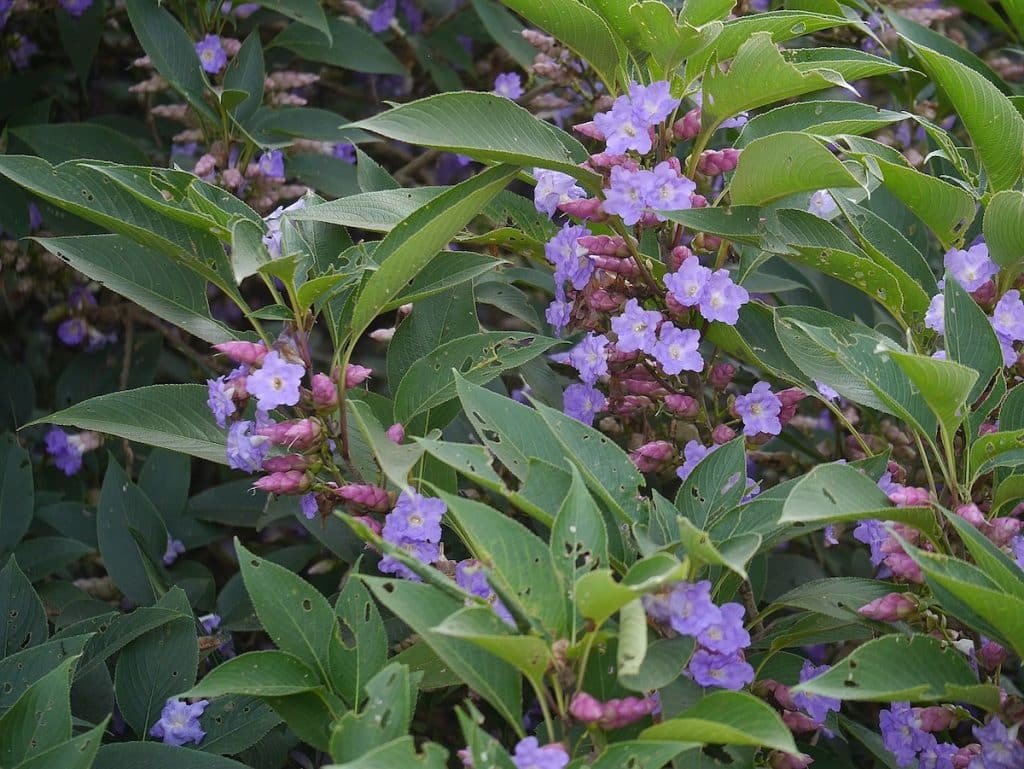
Description
Strobilanthes most often grow in the undergrowth, in damp, shady areas or at the edge of the forest; they have therefore adapted to survive in conditions of low light but constant humidity. These plants do not grow very tall; in the case of S. dyerianus, adult specimens reach 60 to 90 centimeters (2-3 feet), rarely up to 1.2 meters (4 feet). Due to its small size and stems, which grow without bark and gradually become woody with age, S. dyerianus is classified as a subshrub. This cultivar is slightly branched, but specimens intended for ornamental use are often pruned to achieve a denser, more attractive shape.
The leaves of S. dyerianus are spectacular and have a rare property of taking on a metallic sheen (as in certain Begonia, Scindapsus, and Pilea cadierei, to name a few). The leaves are dark green with a generous silvery purple sheen and a waffle-like texture due to the veins that run through them. The foliage is opposite, meaning that two leaves grow at each node on the stem. Oval to lanceolate in shape, the slight downward curve of the leaves gives them a graceful shape, contrasting with the serrated edge.
In Bloom
When the plant flowers, it develops a spike of flowers similar to those of its cousin, the aphelandra (which is much more commonly seen in flower in shops!), bearing small pale purple-blue tubular flowers. Although the flowers are quite pretty, strobilanthes are rarely grown for their flowers, and it is recommended to remove the flower spikes so that the plant can focus on producing leaves. Flowering occurs in autumn or even winter.
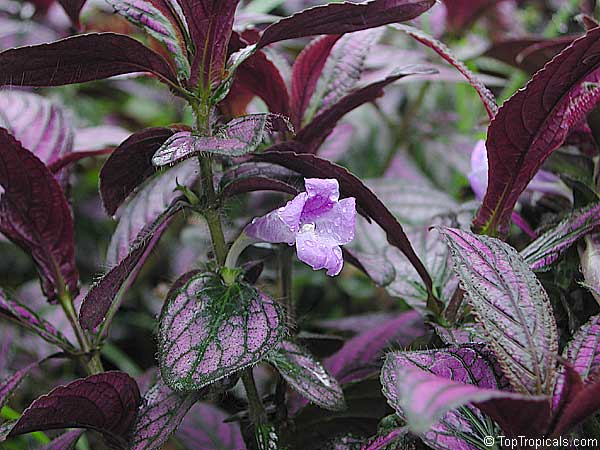
Varieties
The only variety that is “commonly” grown (and I use that term generously, because strobilanthes are quite rare indoors, but very frequently offered in summer because they are easy to grow outdoors) is the Persian shield (Strobilanthes dyerianus described above) with its iridescent purple leaves.
You can also have success with the dark green foliage with silver veins of S. lactatus, which is less common (and I would say… with good reason; although strobilanthes can survive indoors, they are not the easiest plants to grow. Other much easier plants can better meet our silver foliage needs, such as the Scindapsus mentioned above).
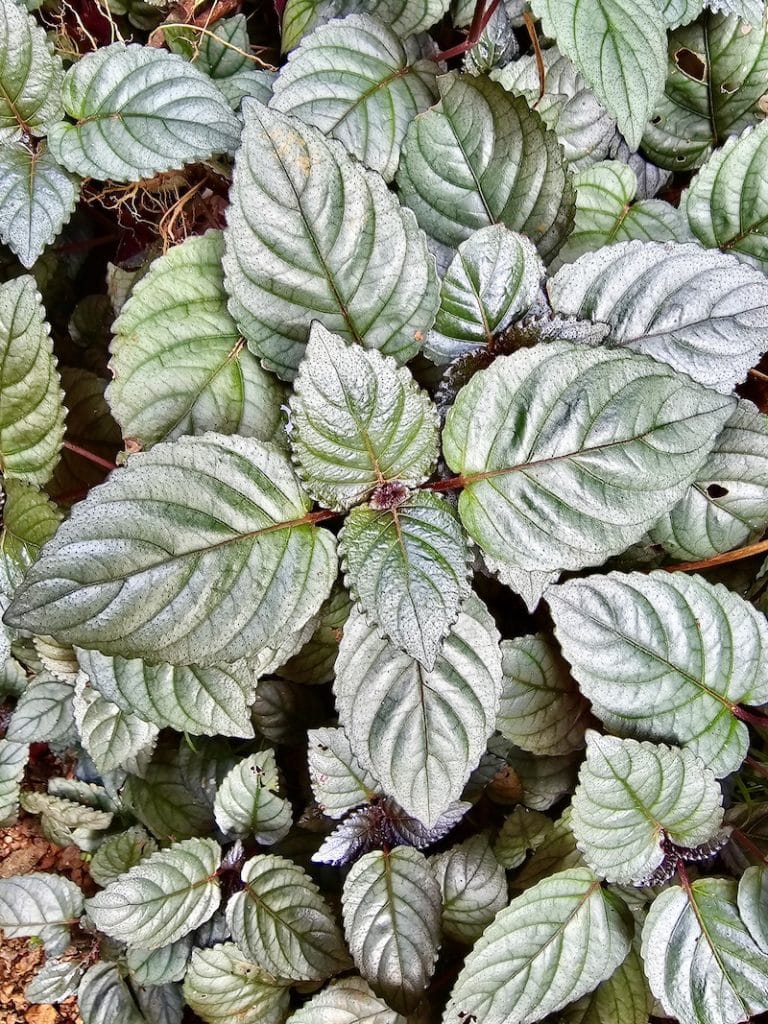
A note for gardeners who do not live in Canada
Since this section is about indoor plants, I won’t list the Strobilanthes species grown outdoors, but here are a few that you might see in temperate gardens: S. anisophyllus (a dense bush with dark, lanceolate leaves), S. violacea (a ground cover with purple flowers) and S. atropurpureus (a small spreading bush that produces flower stalks reminiscent of hostas). The hardiness of these plants allows them to survive brief periods below freezing without too much damage.
Growing Tips

Light
To keep their foliage iridescent and brightly colored, strobilanthes are best grown under bright lighting. They can also survive under medium lighting, but their color may be duller. Be careful of direct, scorching sunlight in summer: in nature, few strobilanthes are exposed to it. They are simply not equipped to survive in such bright light.
And what about the harsh direct sunlight the rest of the year?
In the northern hemisphere, the sun’s rays are generally much milder in autumn, winter, and spring, so direct sunlight will not harm this plant during these seasons, especially if it is healthy and well watered.
In fact, few indoor plants fear direct sunlight: it is really during the summer—or outdoors—that you need to be more careful. There is no need to put curtains in front of windows in winter: on the contrary, all indoor plants that are not dormant appreciate a little more light during the darker months. Just make sure the windows are well insulated!
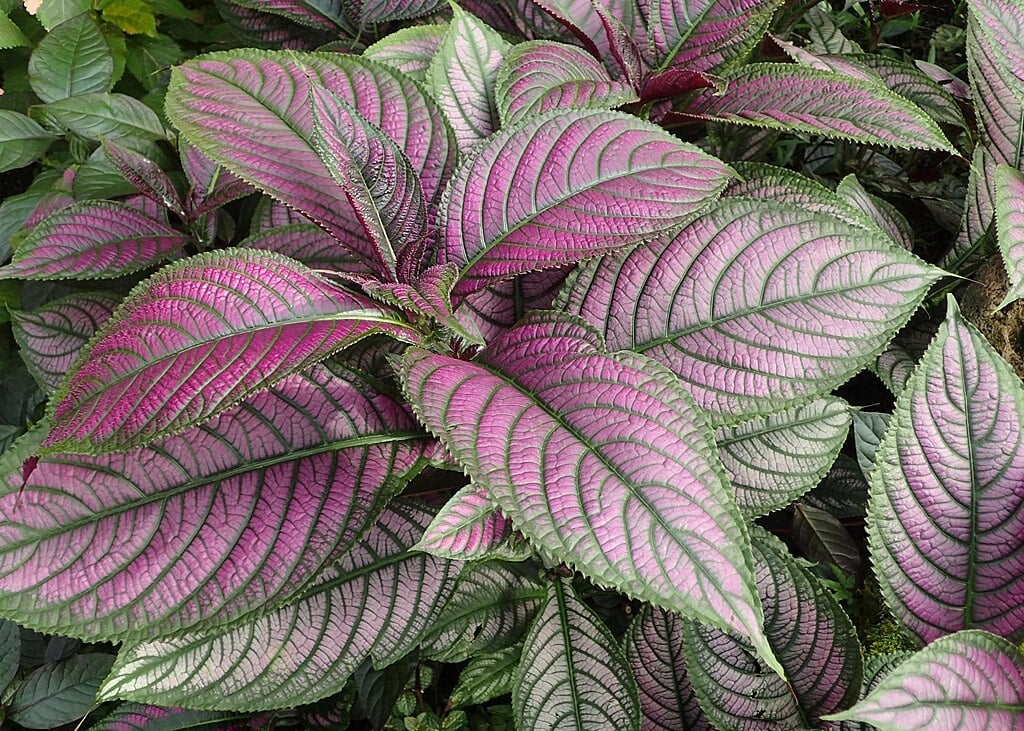
Watering
Watering should be adjusted according to the season: during the growing season, the soil should be kept constantly moist. During the dormant season, when growth slows down, you can allow the soil to dry out by one or two centimeters between waterings.
Atmospheric Humidity
That’s where the problem lies! S. dyerianus cannot survive without moderate to high atmospheric humidity. We are talking about a relative humidity of between 50 and 70%, which is necessary at all times.
Soil and Potting
A well-draining potting mix for indoor plants is sufficient for strobilanthes. Personally, I find coconut fiber-based potting mixes the easiest to keep consistently moist. (Coconut fiber has hydrophobic properties when dry, but since you don’t let the soil dry out much, this shouldn’t be a problem.) Add a few drainage elements (perlite, peat moss, etc.) and you’re good to go!
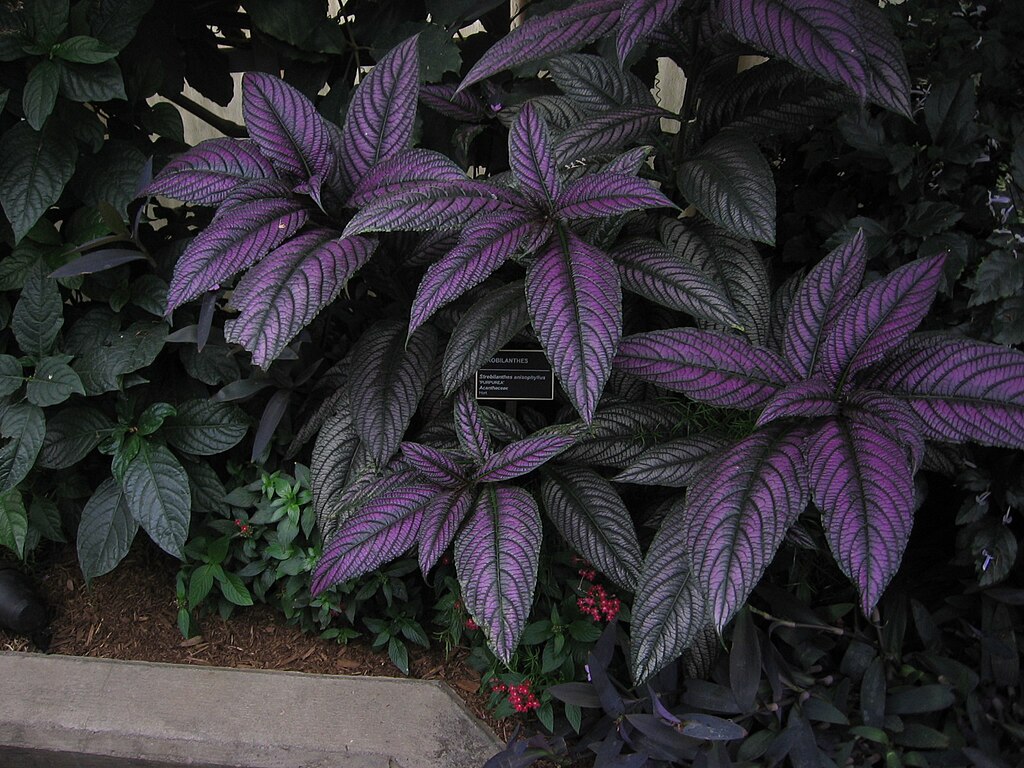
Fertilizer
As with many plants, simply fertilize with a normal dose of all-purpose fertilizer during the growing season, generally from April to September.
Temperature
S. dyerianus is a tropical plant that prefers constant temperatures of at least 64°F (18°C) throughout the year. Some sources suggest that it can tolerate drops to 54°F (12°C), but I think that’s risky.
Maintenance
To have an attractive pot of strobilanthes, some regular maintenance is necessary. First of all, this plant does not tend to branch out on its own, so you need to encourage it by pinching out the terminal shoot. This operation needs to be repeated, as despite this encouragement, strobilanthes can be slow to become dense.
Aging plants tend to become bare at the base, exposing the woody, twisted stems of older specimens, which are often considered unsightly. To remedy this, you can either hide the base of the pot with younger cuttings or replace the mother plant every two to three years.
Propagation
Strobilanthes are fairly easy to propagate: take cuttings from tender stems (which have not yet produced bark) and place them in a well-aerated potting soil, such as peat and sand. The cuttings must then be kept warm, between 21 and 25°C (66 and 75°F), in a greenhouse. Roots should appear within two to three weeks under bright indirect light. For more information on propagation, see the article Cuttings 101.
The final challenge is winter care: when you turn on the heating during the coldest months, strobilanthes may suffer from a lack of humidity. There are various ways to increase humidity: of all of them, the best is undoubtedly the use of a humidifier. It may be necessary to wrap the strobilanthes in a clear plastic bag for a few months to allow it to get through the winter without losing too many feathers, or rather leaves.
Astuce
If it is possible to take strobilanthes outside in summer, it will thrive. It is a traditional summer patio plant and benefits from higher temperatures and humidity. A spot in the shade is ideal, and it will quickly become much more attractive than if it were kept indoors all year round. Although it is a moderately difficult plant to grow indoors, it is very easy outdoors, so make the most of it!
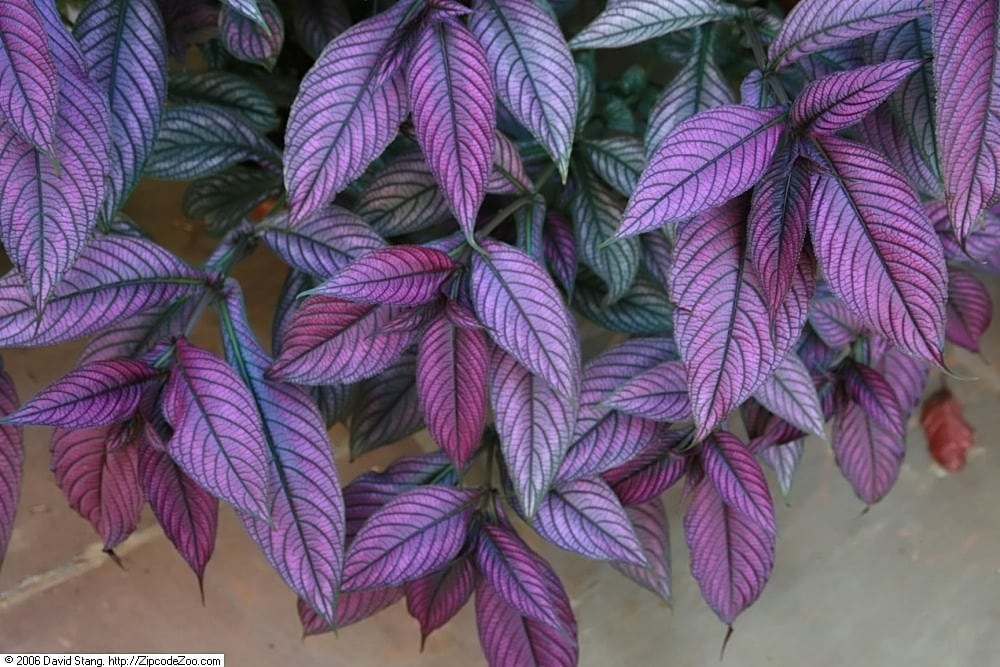
Problems
- Dull leaves: the plant needs more light.
- Leaves that are limp and hang sadly along the stems: the plant needs watering. If this is the first time it has happened, it should bounce back fairly quickly. It may also be a sign of a sudden change in environment: treat it as usual, but give it a week or so to settle in and it should soon adapt to its new life.
- Leaves curling: atmospheric humidity is too low.
- Leaves drying out and falling off: atmospheric humidity has been too low for too long or the plant has not been watered enough.
- Leaves turning yellow and falling off: the plant is being mistreated. Most often, it is in a draft or has been overwatered (yes, it’s possible!).
- Pests: scale insects, red spider mites (in overly dry conditions), aphids (especially when the plant has been outside during the summer).
Toxicity
Strobilanthes is not toxic.
Massive Synchronized Fruiting
Although this does not apply to our good old Persian shield, some species of Strobilanthes are examples of a botanical phenomenon called “massive synchronized fruiting,” where plants coordinate their reproduction by producing a massive bloom in certain years, rather than a small production in other years. This is believed to be an adaptation to ensure that some seeds survive, since the animals that consume them then have more food than they can eat.
In the case of strobilanthes, S. kunthiana blooms once every twelve years, a special year when all individuals bloom at the same time. This species grows only in the Western Ghats mountain range in India, where the hills are covered with blue-purple flower spikes, creating an impressive sight. After flowering, the plant dies.
Conclusion
As my experience has proven, it is possible to keep a strobilanthes indoors during the winter, even without a humidifier. However, the plant does require some maintenance, particularly pruning and probably a spell outdoors during the summer, but it can then become a bushy pot plant with iridescent purple foliage. Now that I know how to make it look good, I’ll let you know in a year if I’ve managed to produce anything as beautiful as what I saw for sale… to be continued. Between you and me, the plant is so beautiful that it’s worth taking up the challenge! What about you, are you going to keep your strobilanthes sold as annuals once summer is over?
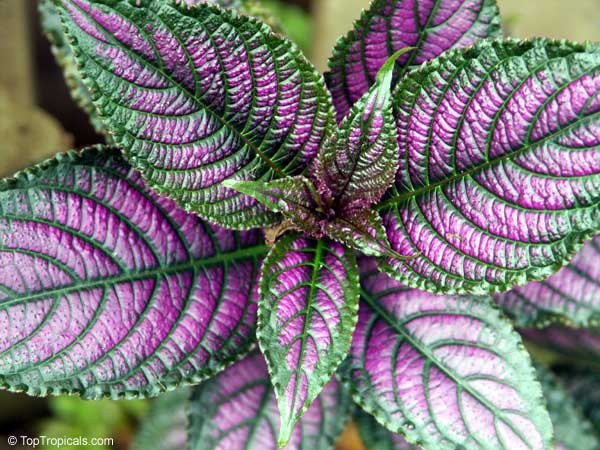









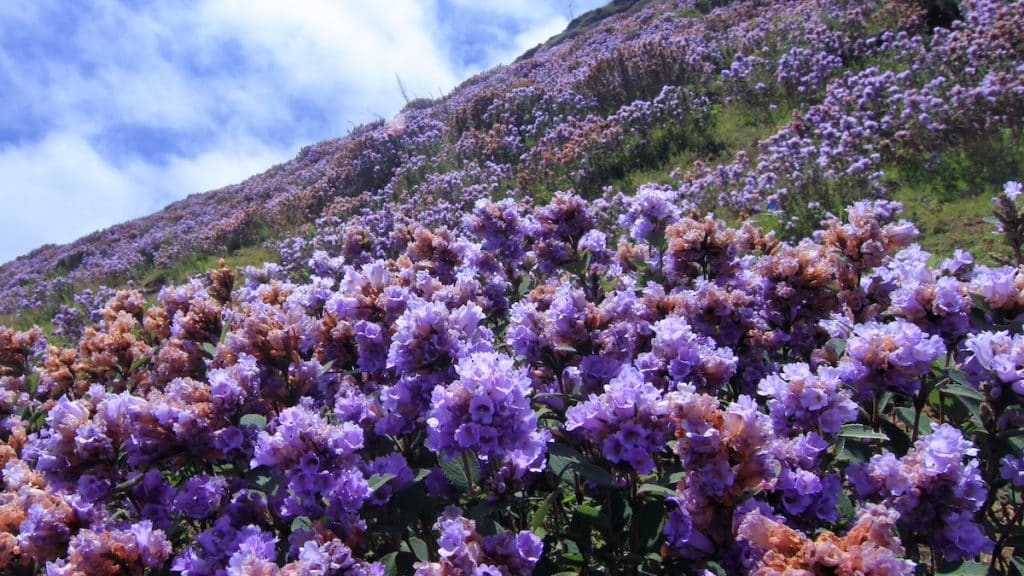
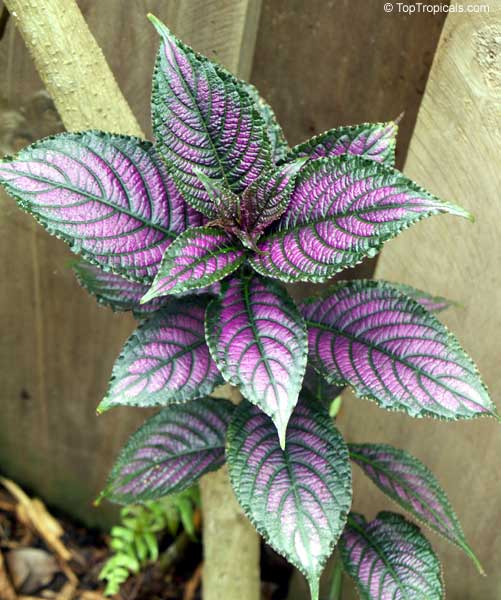
I am so happy with this plant and grateful for the information you shared. I will reluctantly attempt to pinch mine back to encourage bushiness as it’s currently loving it’s life outdoors this summer. In part shade and southern Ontario humidity. Many thanks!